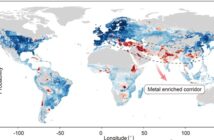At this time of year thoughts inevitably turn to the purchase of nitrogen for next spring – as fertiliser is on offer to attract early delivery onto farm.
Ian Lingham, Hutchinsons Crop Nutrition Specialist in the west, asks if purchasing straight nitrogen is the best value.
“From Hutchinsons involvement in YEN projects, we are learning that timely nutritional inputs are helping to achieve the best yielding crops,” he says.
“However, applying greater quantities of straight nitrogen is not the solution to higher yields; trends show that applications of fresh fertiliser phosphate and spring applications of potash are part of the key to unlocking further potential.”
“Sulphur is also a major nutrient required for maximum output. However, sulphur is prone to leaching in a similar way to nitrogen, so applying it all in one application should be avoided if possible – results show that applying sulphur little and often will give the greatest effect.”
“Spring tissue analysis results over the last few years are showing that a large percentage of crops, over 80% this year, are potash deficient.”
Application of potash in the spring will help to ensure there is available product in the soil for crop uptake when required, not much potash is required by the plant in the autumn so there is no reason to apply it when it is not required and could be prone to leaching, especially on light soils, he says.
“To address all the above, one practical approach would be to apply all the major nutrients at each application window, and using an NPKS fertiliser throughout the spring would achieve this.”
“Replicated trials conducted by Yara and Hutchinsons last year showed the greatest yield in winter wheat was achieved using an NPKS product at each application.”
“As an example, Yara ‘Extra Grass’ 27-5-5+6SO3 applied in a 3-way split will give the crop all the major nutrients required for growth and yield in a balanced way throughout the growing season, ensuring fresh nutrient is always readily available.”
Extra Grass is a granulated compound suitable for spreading up to 36 metres.
He points out that a 10 tonne winter wheat crop requires around 240Kg /ha N, depending on soil type and previous cropping.
“Using ‘Extra Grass’ to apply this quantity of nitrogen also supplies the required amounts of P and K for index 2 soils.”
Sulphur requirements are also met with this approach he adds and although – as the name suggests – this analysis was originally formulated for use in grassland – it fits the bill particularly well in winter wheat.
He notes that this approach works for all winter cereals and OSR; adjusting application rates of the Extra Grass to the required N rate gives sufficient levels of P,K and S for all crops.
“An extra benefit from this approach is a much-simplified fertiliser programme, meaning only there is one standard product to buy and use, and potentially saving on a P or K application with no requirement to recalibrate the fertiliser spreader through the spring.”
“However whatever the circumstances, its always advisable to have an annual review of fertiliser policy to ensure that the most is being made out of the biggest variable input cost. “




